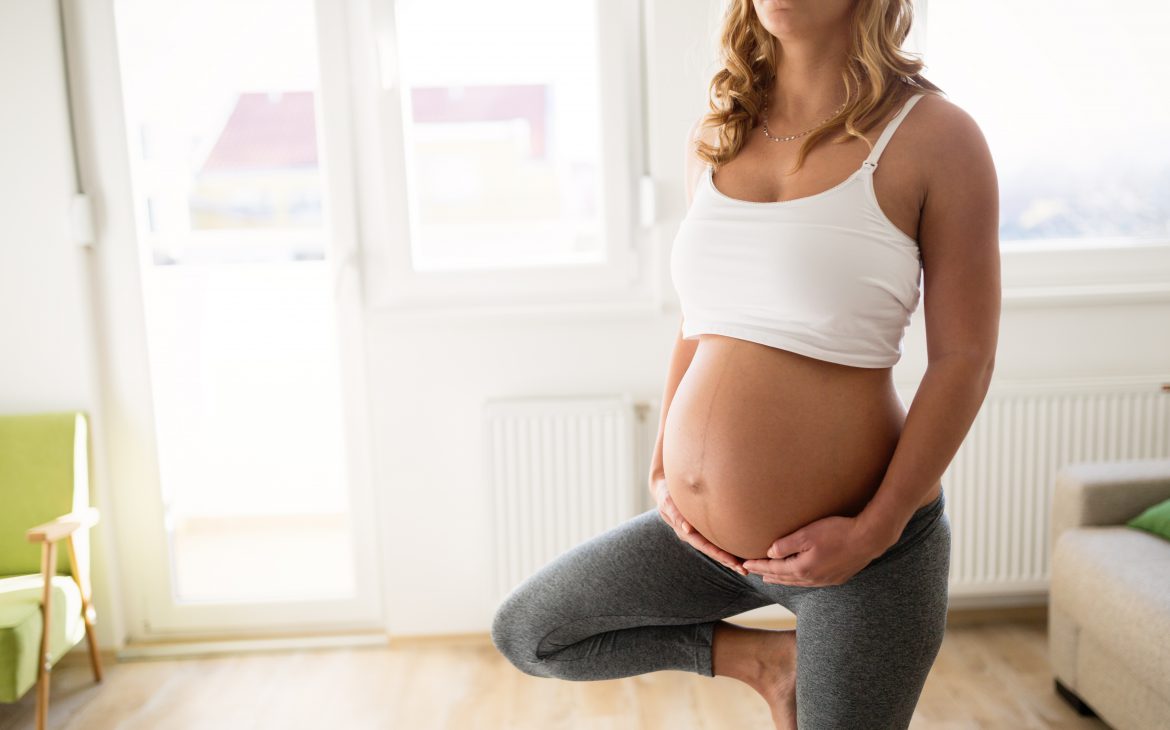There are many do’s and don’ts when it comes to physical exercises during pregnancy. While some women worry about the weight and body shape, others take the time to have a break from the gym and enjoy the changes in their body shape.
However, even during pregnancy, it is important to stay away from sedentarism. The University of Montreal published a study that showed that exercising during pregnancy for just 20 minutes a day, three times a week, can help to enhance a newborn’s brain development. The results based on EEG testing, compared to infants whose mothers were sedentary.
However, not all exercises are included in the list. Low-impact activities, such as yoga, walking and swimming are the best practices.
It is advised to have a minimum of 150 minutes per week of physical activity so you can be considered out of the sedentarism zone. For pregnant women, the goal is not different and becomes twice as important to avoid health issues such as diabetes, varicose veins, back pain and stress. Check below more information on the positive effects of those 3 types of exercises for pregnant women and reach this goal:
Best exercises for pregnant women
Yoga
One of the main positive effects of prenatal yoga is to help to relieve the famous back pains that may occur during this period. It also prevents swallowing of the legs for the lack of blood circulation, improves the sleep (which automatically reduces stress) and help with muscle strengthening.

If you opt to do yoga, just bear in mind to avoid “hot yoga” and positions that can harm you or the baby and make sure that the instructor is aware of your condition (how many months and any notes made by your doctor).
Nowadays, it is actually possible to find prenatal yoga classes in different studios and it is a great option to keep active!
Walk
For those who run as a sport or as a hobby, it is probably impossible to imagine how to keep doing it with a 6 months belly in front of you. That makes walking the closest substitute for this type of exercise and, even though it may not seem, it has several positive effects for pregnant women’s body.
As per general knowledge, the World Health Organization (WHO) informs that all adults should take at least 10.000 steps a day to keep the doctors away, as this is the target to avoid the sedentarism zone _being pregnant does not change that.
Following studies published at the National Center for Biotechnology Information, walking keeps the body weight in control, which automatically reduces the risk of developing gestational diabetes, pre-eclampsia and even pregnancy symptoms such as nausea, fatigue, insomnia and cramps.
Bear in mind that the walks shouldn’t be longer than 30 minutes, at least 3 times a week, and that is advised that you have always the proper clothing and shoes for that. In case of nausea, headache or any sign of faint, take a breath, hydrate and avoid exercising until you feel fully recovered.
Swim
There are many benefits to swimming while pregnant. We have mentioned how exercising may help decrease the stress, swallowing of the legs and feet, and even help with nausea and fatigue. When it comes to the benefits of water, it also helps with preventing varicose veins and back pains, improving blood circulation and even assisting the baby to be in the correct fetal position _doctors believe that as your belly gets lighter underwater, it is easier for the baby to turn inside.
It is important to remember that swimming is extremely relaxing and can help the mother to sleep better, but it is a type of physical activity that requires a lot of energy. It is not advised that pregnant women swim for more than 20 min. As a safety measure, always wear maternity swimsuit so the belly is comfortable. In case the doctor point out any of the following conditions, do not choose swimming as a form of exercise: a chance of miscarriages based on previous cases, weak cervix, any ruptured membranes, any other risks involving your pregnancy.
It is also important to note that this article refers to swimming in a pool with chlorination and not to the sea or public pools, which should be avoided during pregnancy.
Alert!
If you feel any sign of nausea, faintness, pain or bleeding during any type of exercising, it is advised for you to look for a doctor straight away. Always use proper clothing when doing any physic activity even if you are doing it at home and avoid to do so if the water is too warm or too cold.
More importantly, do not push your body limits and remember to always have medical supervision when starting a new form of physical activity. Keeping yourself hydrated it is also extremely important while exercising and after any activity!

